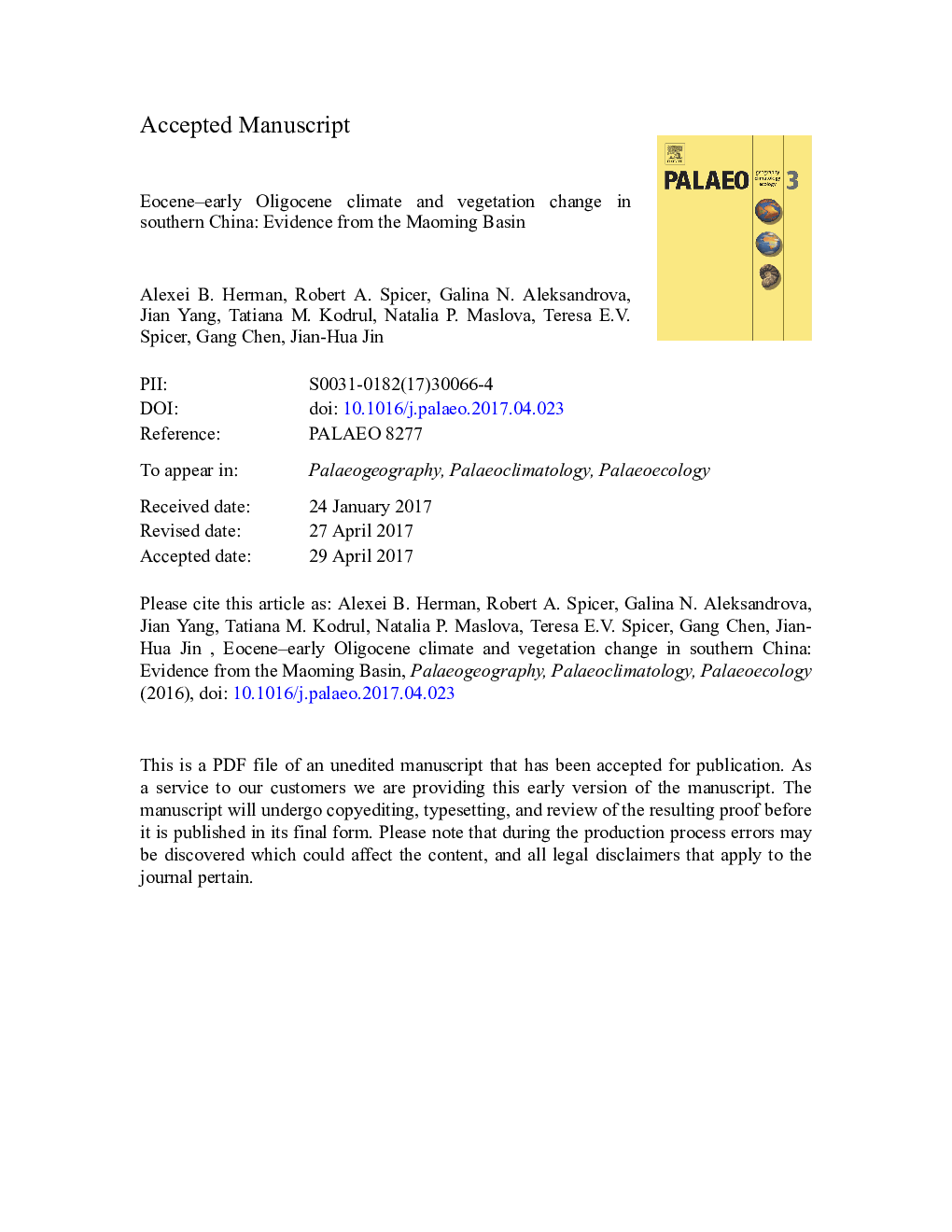| کد مقاله | کد نشریه | سال انتشار | مقاله انگلیسی | نسخه تمام متن |
|---|---|---|---|---|
| 5755849 | 1622113 | 2017 | 48 صفحه PDF | دانلود رایگان |
عنوان انگلیسی مقاله ISI
Eocene-early Oligocene climate and vegetation change in southern China: Evidence from the Maoming Basin
ترجمه فارسی عنوان
اقیانوسی اواخر الیگوسن و تغییرات گیاهی در جنوب چین: شواهد از حوضه مائینگ
دانلود مقاله + سفارش ترجمه
دانلود مقاله ISI انگلیسی
رایگان برای ایرانیان
موضوعات مرتبط
مهندسی و علوم پایه
علوم زمین و سیارات
فرآیندهای سطح زمین
چکیده انگلیسی
Although the Eocene-Oligocene climate transition marks a critical point in the development of the 'icehouse' global climate of the present little is known about this important change in the terrestrial realm at low latitudes. Our palynological study of the Shangcun Formation shows it to be early Oligocene in age: palyno-assemblages in the lower part of the formation indicate a cool interval dominated by conifer pollen in the earliest Oligocene followed by a warmer regime in the second half of the early Oligocene. To quantify middle Eocene to late early Oligocene climate conditions at low (~ 20°N) palaeolatitudes in southern Asia several thousand leaf fossil specimens from the Maoming Basin, southern China, were subjected to a multivariate (CLAMP) analysis of leaf form. For terrestrial palaeoclimate comparisons to be valid the palaeoaltitude at which the proxy data are obtained must be known. We find that leaves preserved in the Youganwo (middle Eocene), Huangniuling (late Eocene) and Shangcun (early Oligocene) formations were likely to have been deposited well above sea level at different palaeoelevations. In the Youganwo Formation fine-grained sediments were deposited at an altitude of ~ 1.5 km, after which the basin dropped to ~ 0.5 km by the time the upper Huangniuling sediments were deposited. The basin floor then rose again by 0.5 km reaching an altitude of approximately 1 km in which the Shangcun Formation fine-grained sediments were accumulated. Within the context of these elevation changes the prevailing climates experienced by the Youganwo, Lower Huangniuling, Upper Huangniuling and Shangcun fossil floras were humid subtropical with hot summers and warm winters, but witnessed a progressive increase in rainfall seasonality. By the early Oligocene rainfall seasonality was similar to that of the modern monsoonal climate of Guangdong Province, southern China. All floras show leaf physiognomic spectra most similar to those growing under the influence of the modern Indonesia-Australia Monsoon, but with no evidence of any adaptation to today's South or East Asia Monsoon regimes. The Upper Huangniuling Flora, rich in dipterocarp plant megafossils, grew in the warmest conditions with the highest cold month mean temperature and at the lowest altitude.
ناشر
Database: Elsevier - ScienceDirect (ساینس دایرکت)
Journal: Palaeogeography, Palaeoclimatology, Palaeoecology - Volume 479, 1 August 2017, Pages 126-137
Journal: Palaeogeography, Palaeoclimatology, Palaeoecology - Volume 479, 1 August 2017, Pages 126-137
نویسندگان
Alexei B. Herman, Robert A. Spicer, Galina N. Aleksandrova, Jian Yang, Tatiana M. Kodrul, Natalia P. Maslova, Teresa E.V. Spicer, Gang Chen, Jian-Hua Jin,
